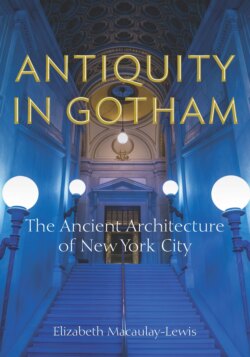Читать книгу Antiquity in Gotham - Elizabeth Macaulay-Lewis - Страница 12
The Grid
ОглавлениеNavigating many cities requires local knowledge or Google Maps; however, finding one’s way around large parts of Manhattan is relatively straightforward. Intersections between cross streets and avenues are the easiest way to direct someone in New York City, as Manhattan is predominantly gridded north of Houston Street.3 The decision to grid Manhattan was a direct response to New York City’s exponential growth in the late eighteenth century. In the 1790 census, the city’s population was 32,328. By 1810, the population had tripled to 96,373.4 To stay competitive, New York City needed to maximize its economic potential and harness its population growth. In 1807, the state legislature appointed three commissioners, Simeon De Witt, Gouverneur Morris, and John Rutherfurd, to improve, lay out, and design the streets of Manhattan. They hired John Randel Jr. to survey the island. The result was the Commissioners’ Plan of 1811. Most of Manhattan is laid out following Randel’s grid, although there have been significant modifications, such as Central Park and upper Manhattan, whose topography defies the rigidity of an orthogonal grid.5 The early grid facilitated trade, prevented traffic jams, monetized the property market, and helped the city manage its ever-increasing population, which had reached 515,000 by 1850.6
The “Remarks of the Commissioners” in the Plan of 1811 makes no explicit reference to the planning traditions of the classical world. Rather, the city planning conventions of antiquity seem to have been implicit in New York’s grid. The origin of the rectilinear street grid is traditionally ascribed to Hippodamos, who laid out Piraeus, the new port of Athens, immediately after the end of the Persian wars (480/479 BCE) and possibly his hometown of Miletus (in c. 479 BCE), according to an orthogonal grid.7 The “Hippodamian plan” was widely adopted in the Greek world and then in Roman cites and colonies, especially those built for veterans.8 While the grid fell out of use in the fortified cities of medieval Europe, Europe’s colonization of the New World renewed the grid’s popularity in city planning. The Law of the Indies, which was widely applied in Spanish colonial cities, was predicated on a grid.9 Buenos Aires, Santa Fe, Albuquerque, Savannah, Philadelphia, and Albany were all gridded early in their history. Thus New York City’s adoption of the grid seems connected to larger trends in the urbanism of the New World.
